- Home
- Brian Keene
Entombed
Entombed Read online
DEADITE PRESS
205 NE BRYANT
PORTLAND, OR 97211
www.DEADITEPRESS.com
AN ERASERHEAD PRESS COMPANY
www.ERASERHEADPRESS.com
ISBN: 1-62105-049-1
Entombed copyright 2011 by Brian Keene
Cover art copyright © 2012 Alan M. Clark
www.ALANMCLARK.com
All rights reserved. No part of this book may be reproduced or transmitted in any form or by any means, electronic or mechanical, including photocopying, recording, or by any information storage and retrieval system, without the written consent of the publisher, except where permitted by law.
Printed in the USA.
Acknowledgements
This time around, my thanks and sincere appreciation go to everyone at Deadite Press, Tony and Kim at Camelot Books, Mark Sylva, Tod Clark, and my sons. Special thanks to Andy Deane, Bella Morte, and Metropolis Records for their kind permission to use the lyrics of “The End of the End”. Please give them your support.
This one is for Sultan White and Wrath James White,
with the hopes of many more zombie Christmases to come.
Author’s Note
This novel takes place in the same “reality” as my novel Dead Sea, however, since it is not a direct sequel, knowledge of one isn’t required to enjoy the other. Also, although many of the locations in this novel are based on real places, I have taken certain fictional liberties with them. I’ve also fictionalized other locations based upon a variety of their real-life counterparts. So if you live in any of them, don’t look for your favorite luxury hotel or impregnable nuclear war bunker. You won’t like what’s lurking there now.
ONE
I was sitting in the movie room, watching an episode of Aqua Teen Hunger Force for the twentieth time and talking to the disembodied head of Dwight D. Eisenhower, when the rest of the group decided that we should all start eating each other.
Pickings were slim for my viewing pleasure. The bunker’s media collection consisted of a season of Reba McEntire’s old sitcom, an episode of The Wiggles, a couple of Will Ferrell movies, the re-mastered and updated first Star Wars trilogy, a season of Aqua Teen Hunger Force, a season of American Idol, and a documentary about deer hunting. I avoided watching Reba because seeing Joanna Garcia, the actress who played Reba McEntire’s daughter, made me horny, and that was a totally unhelpful feeling to have when one is sixty feet under the ground and recently divorced. Ditto The Wiggles (say what you will, but some of their dancers were totally fucking hot). Watching the deer hunting documentary made me think about how much I missed deer bologna and venison steaks, and that made me hungry—which was an even less helpful feeling down here in the bunker than being horny. I’d watched Star Wars a few times since we came down here, but it still pissed me off that in this updated version of the film, Han Solo no longer shot Greedo first. And as for Will Ferrell? Fuck him. I never liked Will Ferrell’s movies—he was about as funny as cancer. And I’d thought that American Idol sucked even before the world ended, and saw no reason to start watching it now. Besides, it didn’t matter who won, since they were probably all dead now.
That left Aqua Teen Hunger Force, which was okay with me, although sometimes I wished that someone would have left some Metalocalypse DVDs down here, too. Sometimes I wondered if the guys who’d created those shows were still alive somewhere, maybe sequestered in a bunker like I was and still making shows in the hopes that someone might see them some day.
I had the lights turned off. The media room was lit only by the glow from the huge flat-screen television that occupied most of the wall at the front of the room. I was sitting in the left hand side of the front row, right next to Eisenhower’s head. The chairs weren’t very comfortable. They hurt my butt if I sat in them too long, and they squeaked every time I moved around. Before Hamelin’s Revenge turned the world to shit, the chairs had only been used by visitors to the bunker—tourists who sat in them once a day to watch a seven-minute documentary on the facility’s history. Dwight D. Eisenhower was a big part of that history, which was why his head was in the movie room, too. That was also why the movie room had been updated to play DVDs rather than the old reel-to-reel movies. It was easier for me and my fellow tour guides to press play on a DVD player than to fool around with actual film canisters. I thought Eisenhower would have approved.
Eisenhower didn’t say much. He couldn’t. He was a bronze bust, and bronze busts don’t talk. But that was okay with me. He didn’t have to say anything. He was a good listener, and a good listener was what I needed—especially since most of the other people down here were slowly turning bat-shit crazy. There was more than one Eisenhower in the room. Framed pictures of him hung on the walls, along with photographs of the hotel sitting above the bunker, and a few snapshots of the facility from when it was still under construction—old black and white images of the Army Corps of Engineers swarming over the site with bulldozers and dump trucks and cranes.
Swarming, just like the dead rats that swarmed out of the sewers in New York City. That was how this whole thing started—Hamelin’s Revenge. New York seems so far away, especially here in the mountains of West Virginia. But it must be true what they say—that New York City is the center of the world, because what started there swept across the rest of the planet in less than a month’s time. I still get chills when I imagine what it must have been like. It happened during the evening rush hour. Zombie rats crawled out of the sewer and began attacking pedestrians. Being dead, they moved much slower than a living rat would, but that didn’t matter. The city was so choked with traffic that their pickings were easy. The sidewalks and streets and bus stops and subway platforms were gridlocked, packed with commuters. People tried to get away but there was nowhere to go. The rats fed. Many people were bitten to death, the flesh stripped from their faces and hands, their stomachs chewed open so that their attackers could get to the good stuff inside. Many more victims were trampled to death as their fellow New Yorkers fled.
The breaking news dominated television and the internet that night. At first, MSNBC called it a riot, and both CNN and FOX speculated that it had been a possible terrorist attack. Soon, they confirmed that it had been rats—dead rats. As impossible as that sounded, eyewitness accounts confirmed that the rats were indeed dead when they began their attack. Pundits scoffed at this, and the authorities refused to comment, but soon enough, the live footage proved this to be true, as unlikely as it seemed. The coverage was fluid and the situation on the ground grew more chaotic with each passing hour. FOX had footage from inside a hospital. The emergency room was filled with wounded New Yorkers. Those who had suffered bites got sick very quickly. A short time later, they died. And after they died, they came back, just like the rats.
Before that first night was through, the media already had a name for it—Hamelin’s Revenge, the return of the rats the pied piper was hired to get rid of. It didn’t seem to matter that Hamelin was the name of the town, rather than the piper himself. I don’t know. I used to wonder sometimes if the media had names and graphics on standby, just waiting to use them when all hell broke loose. It certainly seemed that way that night. There was Wolf Blitzer on TV, with a big graphic of a pied piper dressed like the Grim Reaper standing behind him and the words ‘Hamelin’s Revenge’ superimposed over the character. Dead people and dead rats attacked the living, and then those who’d been infected joined their ranks. The media referred to the dead as cannibals, but then, during a 2am news conference, the White House Press Secretary used the word that was on everyone’s mind.
Zombies.
By dawn the next morning, the National Guard had locked everything down. New York City was officially quarantined. They blockaded the bridges and tunnels and rail tracks. The
Guardsmen were given the order to fire on anyone trying to escape the city, and some of them actually did. They gunned down civilians in cold blood. Then some of the other soldiers refused the order to shoot civilians and turned on their comrades instead. Soon enough, the troops were fighting each other—and fighting the civilians who shot back, as well. While dissent broke out in the military ranks, Hamelin’s Revenge broke out of the city. It showed up in Newark, then Trenton, and then Philadelphia. By the end of the second day, it had spread to Buffalo, Baltimore, Washington D.C. and over the border into parts of Canada. The President declared martial law nationwide, even in those areas where the disease hadn’t shown up yet. The army was mobilized. But by then, it was too late. You could shoot a zombie but you couldn’t shoot the disease that caused it to get up and walk around in the first place. All it took was one bite, one drop of blood, pus from an open sore or cut—any exposure to infected bodily fluid—and you became one of them. People that died normal deaths, from illness or accidents or murder, stayed dead, but those who came into direct contact with the disease and managed to get infected—they became zombies. At first, the disease only infected humans, rats and mice. By the second week, however, it had jumped species and started showing up in dogs, cats, cattle, bears, coyotes, goats, sheep, monkeys and other animals. Some creatures, like pigs and birds, seemed to be immune, but most weren’t so lucky. Even weirder, some species that had seemed immune at first, like squirrels and deer, became infected later on. In truth, I’d never understood why the disease didn’t impact squirrels right away. After all, squirrels are just rats with bushy tails. All I know is that if the disease ever does begin to infect birds, humanity is fucked.
But we’re probably fucked anyway.
Once the disease began jumping from species to species, it became unstoppable. America, South America and Canada fell first, followed by Europe, Asia, Africa and then Australia. After that, we lost what little satellite television coverage remained. The last thing any of us saw, as far as I know, was footage of zombies shuffling through the streets of Mumbai.
Of course, the zombies weren’t the only threat. There were roving gangs of looters, criminals, extremists and military and law enforcement personnel who’d decided to watch out for themselves, rather than the rest of us. The new law was the law of the gun. Bad enough you had to worry about getting eaten by a dead friend or family member—you also had to worry about getting robbed or raped or murdered by some crazy, antisocial fuckwit taking advantage of the chaos and thriving in the new world disorder.
Not that the powers-that-be had to worry about any of that. Washington D.C. was evacuated early on. They sent President Tyler, the Vice-President, the Cabinet, the Pentagon big-wigs, and all of the House and Senate members and their staff and family to secure underground bunkers in Pennsylvania, Virginia, Maryland and Colorado. Bunkers just like this one, except more modern. I have to wonder if they’re in any better shape than we are. Probably. I doubt our leaders are sitting around watching Aqua Teen Hunger Force and voting on whether or not to resort to cannibalism. At least, not yet.
I’m so fucking hungry.
This bunker was built as a relocation center back in the early Sixties, when the Cold War was really heating up. President Eisenhower commissioned it, which is why a bronze bust of his head and all the photographs and pictures of him are down here with us. In the event of a nuclear attack on the United States, the bunker was supposed to house the members of the House and the Senate, along with their family members and a few staffers. It was big enough to hold just over a thousand people. To build it, they tunneled eight hundred feet into the side of the mountain, and dug eighty feet underground, as well. No, it wouldn’t survive a direct strike from a nuclear warhead, but it was deep enough and secure enough to protect its inhabitants from nuclear firestorms and radioactive fallout. The site was easily accessible from Washington D.C.—it was less than an hour away by railroad or plane, and the interstate ran nearby, as well. Back when the government kept it stocked with supplies, people could have stayed here for up to one-hundred and twenty days.
To prevent the local hillbillies from becoming suspicious during construction, a cover story was devised for the operation. The public was told that a new luxury hotel was being built on top of the mountain, and that it would bring jobs and economic development to the area. And that’s exactly what happened. A beautiful, ritzy resort hotel—the Pocahontas (named that because of its location in Pocahontas County)—was erected, and it attracted the wealthy, powerful and elite from around the world. The beautiful people came to visit in droves. Generations of actors, politicians, oil barons, banking magnates and others were among the frequent guests. The hotel employed locals, providing a nice alternative for those who didn’t want to slave away in a coal mine, cut timber, try their hand at farming, bend a wrench, or just sit back and collect welfare (these are the five biggest occupations in West Virginia). Over the years, the town grew and expanded. So did The Pocahontas, adding new wings, a golf course, tennis and racquetball courts, stables and an equestrian trail, and even its own private runway for small planes. And in all that time, no one above ground, other than the hotel’s administrators, ever suspected what lay beneath the mountain—until one Sunday morning a little over a decade ago, when an investigative reporter for the New York Times broke the story on the front page. When that happened, the facility was rendered useless. The government immediately decommissioned the bunker and turned ownership of it over to the hotel. At one point, a data storage company wanted to lease it from the Pocahontas, but the hotel’s management had other ideas. They turned it into a museum. For the last ten years, the bunker has been open to visitors and guests of the Pocahontas—an added tourist attraction to an already luxuriant establishment. I should know. I’ve been one of the bunker’s tour guides for the last three years. It was either that, or get a job at Wal Mart, and I fucking hate Wal Mart. And not just because my ex-wife worked there.
That was how I ended up down here with the others. By that point, the shit had already hit the fan in New York and Philly and elsewhere, but it hadn’t become widespread. At least, not here. We’d had reports of a few zombies, but West Virginia is such a rural state, with so much wilderness in between our towns, that it didn’t seem like an epidemic. It was like watching 9/11 or Hurricane Katrina or one of those other disasters—you knew it was happening and you felt connected to it, but at the same time, it seemed so far away. Bad things always happen to other people. Not to you. Not until the bad things show up at your front door unannounced and come inside and stay for a while.
Martial law hadn’t been declared in West Virginia yet, and the hotel was still making us show up for work, even though lodging reservations had dropped to zero. I was standing out back, sneaking a smoke with a few of the Mexican guys from the kitchen, when the dead arrived at the Pocahontas. We smelled them before we saw them, but we didn’t know what the stench was or where it was coming from. It was hot outside, and there was only a slight breeze—strong enough only to move the air around rather than cool us off. We all caught a whiff at the same time. I frowned. It was like smelling the world’s biggest pile of road kill. That’s what I thought it was, at first. I remember wondering if there was a dead groundhog or something somewhere nearby. One of the other guys said something in Spanish. I don’t know what it was, because I never learned the language. He probably said something like, “Goddamn, that stinks.” Within another minute, the stench grew overpowering. We all looked at each other, frowning and making faces. The Mexican guys talked to each other. I nodded as if I understood them. And then…there they were—shuffling out of the woods and across the parking lot towards us.
Zombies.
I think their silence was the scariest part. The dead were quiet. No moans or gurgles or cries or shouts. That’s not the norm, or at least it didn’t remain the norm. Zombies make noise, as a rule. But this group was quiet. It was obvious that they meant business. They bore down on the hotel with a
n emotionless, single-minded determination, hobbling and pulling themselves forward despite the fact that some of them were missing limbs and major organs, or trailing intestines behind them like leashes. Most of the zombies were human, but there were dead animals, too. Rats, mostly, along with a few foxes and skunks and a black bear cub that was missing an eye and most of its lower jaw. That didn’t stop it from coming, though. The dead are determined sons of bitches. Their silence made that determination all the more unnerving.
Two of our groundskeepers drove toward them in a golf cart. To this day, I don’t know what those guys were thinking. It’s not like they were armed or anything. They were landscapers, not soldiers. I have no idea what they intended to do. Maybe run over the zombies? Whatever their plan was, they never got a chance to see it through. The dead might have been slow, but they could swarm you until there was nowhere left to run. That’s what happened with the groundskeepers. They ran over a zombie fox with the golf cart, but the corpse got caught beneath their back wheel and slowed them down. The golf cart shook. Bits of matted fur and decayed flesh were smeared across the pavement. Then, the driver made a sharp turn. I guess he was trying to dislodge the dead critter. Problem was, golf carts aren’t made for hairpin turns. He tipped the fucking thing over on its side, and before either man could scramble free of the wreckage, the zombies were on them from all sides—penning them in. One man started screaming as the dead shuffled closer. The other one sank to his knees and began praying in Spanish and frantically crossing himself. It was a slow death for them both. The zombies crowded in, closer and closer, until both the golf cart and the victims were lost from sight. Their screams became whimpers, and then turned into screams again. One zombie thrust its arm in the air, as if in triumph, clutching a hunk of raw, red, dripping meat.

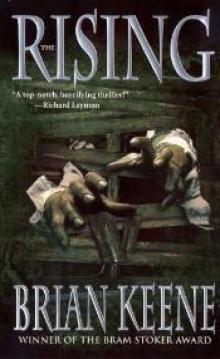 The Rising
The Rising Entombed
Entombed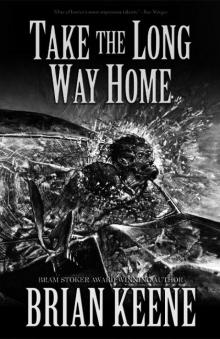 Take the Long Way Home
Take the Long Way Home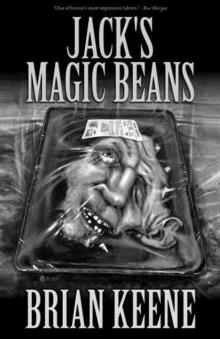 Jacks Magic Beans
Jacks Magic Beans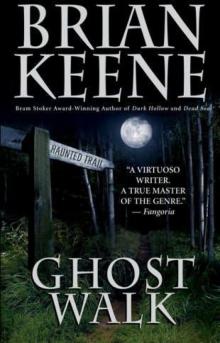 Ghost Walk
Ghost Walk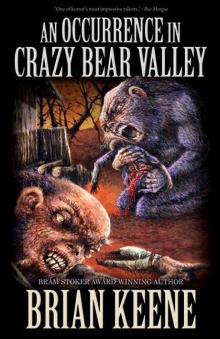 An Occurrence in Crazy Bear Valley
An Occurrence in Crazy Bear Valley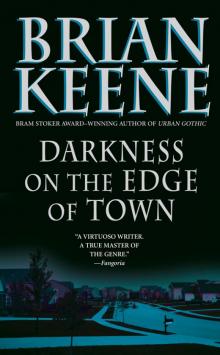 Darkness on the Edge of Town
Darkness on the Edge of Town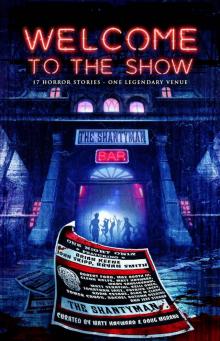 Welcome to the Show: 17 Horror Stories – One Legendary Venue
Welcome to the Show: 17 Horror Stories – One Legendary Venue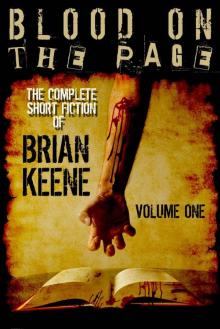 Blood on the Page: The Complete Short Fiction of Brian Keene, Volume 1
Blood on the Page: The Complete Short Fiction of Brian Keene, Volume 1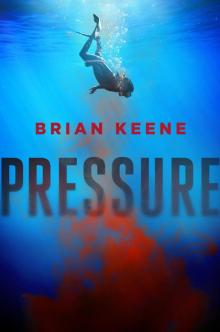 Pressure
Pressure A Gathering of Crows
A Gathering of Crows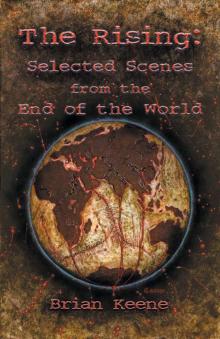 The Rising: Selected Scenes From the End of the World
The Rising: Selected Scenes From the End of the World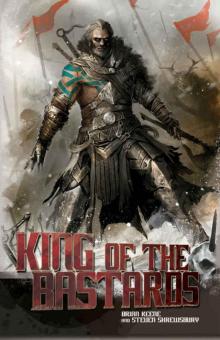 King of the Bastards
King of the Bastards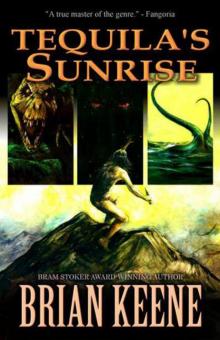 Tequila's Sunrise
Tequila's Sunrise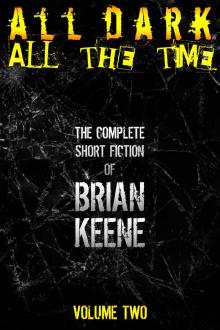 All Dark, All the Time
All Dark, All the Time Where We Live and Die
Where We Live and Die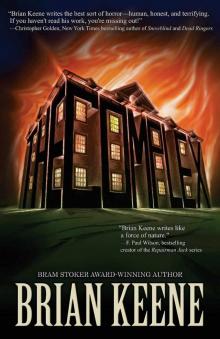 The Complex
The Complex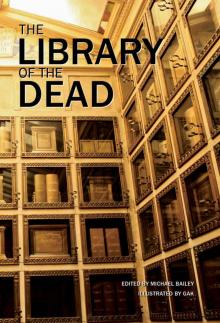 The Library of the Dead
The Library of the Dead The Conqueror Worms
The Conqueror Worms The Girl on the Glider
The Girl on the Glider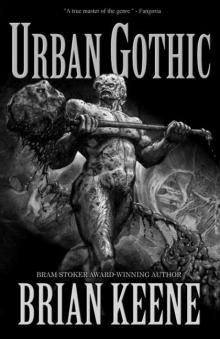 Urban Gothic
Urban Gothic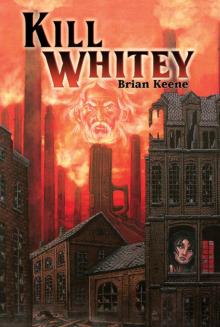 Kill Whitey
Kill Whitey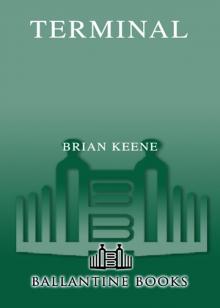 Terminal
Terminal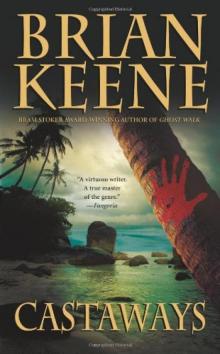 Castaways
Castaways